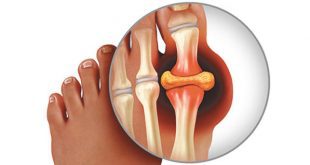By Ramon Gil, M.D. –


In 1994, Dr. Cynthia Comella, from Rush Presbyterian-St. Luke Medical Center in Chicago, published the first controlled clinical trial looking at the effect of Physical Therapy (PT) in patients with PD (Physical Therapy and Parkinson’s Disease. A Controlled Clinical Trial. Neurology. March 1, 1994.44:376). The results indicated objective benefits in the patients’ motor status and improvement in their abilities to perform activities of daily living (ADL’s), however, the scores returned back to baseline 6 months after they returned to their “normal lifestyle.”
Benefits of Exercise to Improve Mobility
This past April, 2011, Dr. Lisa Shulman from the University of Maryland, at the 63rd Annual Meeting of the American Academy of Neurology in Honolulu, presented the results of another study conducted by her and her colleagues. According to Dr. Shulman, their study “showed that low-intensity exercise performed for 50 minutes, three times a week was the most beneficial in terms of helping participants improve their mobility.” This was compared with two other groups of patients, one involved with higher intensity on a treadmill training to improve cardiovascular fitness and another group using weights and stretching exercises to improve muscle strength and range of motion.
For PD patients, gait instability and falls is one of the major causes of disability, morbidity and mortality. The results of Dr. Shulman’s study also show that “exercise in people with PD can make a difference in their function and may in fact delay disability and help to preserve independence.” Not surprisingly, patients have to stay on the program for undetermined periods of time.
Cardiovascular disease remains the #1 killer in this Country and, despite that numerous clinical trials reviewed in 2006 reported a 25-30% reduction in mortality for patients participating in cardiac rehabilitation programs compared with non participants, the percentage of patients that drop out from these programs reaches, in some series, almost 50%.
Alternative Treatments
It appears then, that exercising on a regular basis is not particularly fun for many, if not most of our patients. The question then is: Are there other forms of “non pharmacologic treatments” that could move us beyond the benefits received by all the drugs available today to treat PD and related disorders? Dr. Jorge Juncos and his team at Emory University, Atlanta, GA, very much believe that those interventions are available.
Balance and Harmony through Ballroom Dance and Martial Arts
For the past several years, Emory University has been studying the effect of martial arts and dance in PD patients. Small pilot studies indicate that PD patients involved in ballroom dance classes do better than those who aren’t and stay longer in their programs than those involved in conventional PT programs or gym exercises. As our dear friend Dr. Juncos once said: “American medicine traditionally has focused on finding the right medicine to fix individual problems, while Eastern practices have focused on ensuring balance and harmony throughout the body… This has fed a sort of East vs. West mentality in medical research.”
The Roles of Yoga and Massage Therapy to Treat PD
Organizations such as The Michael J. Fox Foundation and even the National Institute of Health are among the long list of supporters of this approach to improve the treatment of PD and related disorders. We asked our own Vibha Kumar and Megan Guynn what were their thoughts about the roles of Yoga and Massage Therapy in the treatment of PD? Their answers are very much in tune with what other authorities in the field have already demonstrated:
“Yoga movements induce relaxation, which helps to palliate some of the motor problems affecting PD patients, including “tremor.” They also activate affected muscle groups and can be a steady reminder of where your body should be and how it should move. Depression and anxiety are common in PD patients, breathing and relaxation exercises can help patients to minimize these problem,” said Yoga Therapist and Instructor, Vibha Kumar.
Beneficial Effects of Yoga
“Other well recognized beneficial effects of Yoga in PD patients include: improvement of posture, increased physical and mental energy and vitality, improved mental and physical balance and finally a general feeling of wellbeing,” Kumar emphasizes.
Therapeutic Benefits of Massage Therapy
Megan A. Guynn, LMT, MMP said: “Massage therapy, the manipulation of the soft tissues of the body, has many therapeutic benefits to improve the quality of life (QOL) for PD patients. They experience symptoms involving muscle rigidity, tremors, digestive issues, impaired coordination, and generalized stiffness. There are four energies that will keep a muscle contracted in the body: ATP, ACH, oxygen, and protein. As a medical massage therapist, I utilize techniques that deactivate the trigger points in the muscles, which release these four energies. This allows the blood supply to nourish the tissue and release the waste that causes this constant muscle constriction. As a result of this process, the following occurs:
Lastly, and possibly most importantly, all these therapeutic effects seem to work synergistically with other medical interventions, promoting an overall improvement in QOL.
Innovative Ways to Live a Better Life
We constantly look for ways to better serve our patients, searching for and making available to them innovative ways to live a better life. Today, we may not have a cure, but rest assured that we have ways to improve your QOL, to ease the burden of your care partner, and to empower you with education. All this will allow you to become a better and wiser patient, one that understands the diseasethat is affecting you and the recommendations given to you by your treating physicians, one that will emerge victorious from this challenge. “Join the club,” move on into “healthier ways to treat PD.”
Specializing in Internal Medicine and Neurology, please contact Dr. Ramon Gil to learn more about healthier ways to treat Parkinson’s Disease, 941-743-4987.
1. Increased flexibility and range of motion
2. Improvement in digestive motility and quality of sleep
3. Stress reduction
4. Improved circulation to the soft tissue
5. Improvement in posture, coordination and rigidity of the bod
Ramon A. Gil, M.D.
Medical Director, Parkinson’s Disease
Parkinson’s Disease Treatment Center of SW Florida
Call 941.743.4987
 Southwest Florida's Health and Wellness Magazine Health and Wellness Articles
Southwest Florida's Health and Wellness Magazine Health and Wellness Articles

